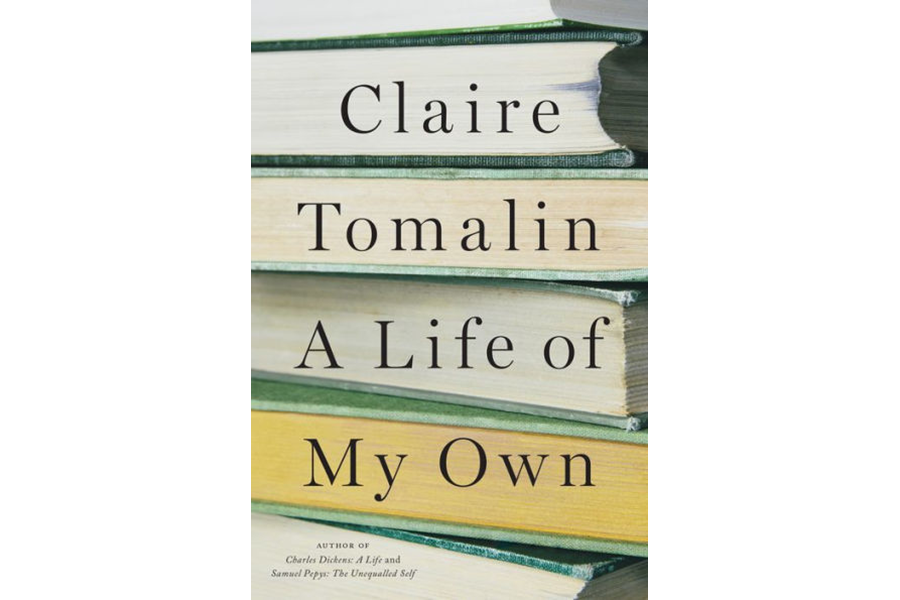'A Life of My Own' is biographer Claire Tomalin's chance to turn inward
Loading...
We live in a golden age of biography, when authors who write well about famous figures can acquire a measure of fame for themselves.
David McCullough has certainly done that with his chronicles of Harry Truman, John Adams, and the Wright Brothers. Doris Kearns Goodwin, who’s written books about Abraham Lincoln, Lyndon Johnson, and the two iconic Roosevelts, TR and FDR, has become something of a household name, too. In the pantheon of superstar biographers, the English writer Claire Tomalin has a place as well, endearing herself to readers with bestselling accounts of Charles Dickens, Jane Austen, Samuel Pepys, Thomas Hardy, Mary Wollstonecraft and others.
In A Life of My Own, Tomalin tells fans how she came to do the work that she loves. The title of her memoir has a clever double meaning. Obviously, Tomalin means to say that this time around, the biographer is turning her scrutiny inward, parting the curtain on the scribe who’s played Boswell to so many cultural legends. But the name of Tomalin’s book also sounds a subtly feminist note, revealing how a woman who’s been a daughter, wife and mother slowly learned to stake out an identity apart from her family roles – a life of her own in the reading and writing of books.
But that message of empowerment is more implied than intoned. In this memoir as in her acclaimed biographies, Tomalin lets the telling of a story reveal its own truth, unmarked by the moralizing of the soapbox. And what a story it is.
Born in Depression-era England to a father who was an academic and a mother who composed music, Tomalin turned to reading as a respite from her parents’ troubled marriage. “My mother told me early,” Tomalin tells readers, “that whatever happens to you, however unhappy you may be, you can escape into a book. She was right.“
As her parents split and she entered adolescence, Tomalin’s reading deepened. “Words, poetry, history interested me,” she writes, “and I asked my mother for the two-volume ‘Shorter Oxford Dictionary’ for my thirteenth birthday. I bought Eileen Power’s ‘Medieval English Nunneries,’ and Power, a young woman historian, became my heroine.”
Tomalin’s later career as a literary editor and biographer of great authors points to her expertise in explaining the magic of a text. She reveals very little of that insight here, and a reader sometimes wishes Tomalin would share more particulars about her connection with favorite writers. Although “A Life of My Own” isn’t meant to be a work of literary criticism, the centrality of books in Tomalin’s life underscores the need for deeper dives into her intellectual views.
But one senses in reading “A Life of My Own” that Tomalin never grows completely comfortable putting herself in the foreground. That kind of sublimation has served Tomalin well in her literary biographies, allowing her to sit discreetly off-stage while luminaries such as Austen and Dickens command an audience. In an autobiography, of course, shyness on the page is inherently problematic.
But Tomalin’s reticence can be charming, too – a refreshing corrective to the contemporary fashion in confessional narrative. Her first marriage to journalist Nick Tomalin was traumatic, complicated by his serial infidelities and frequent absences, the sadness compounded when he was killed by a Syrian missile attack against Israel in 1973. Tomalin’s youngest son was born with spina bifada, and a daughter committed suicide. She writes of these things with an unusual mix of clarity and restraint, evoking the British stiff upper lip so common to her generation.
One of the key takeaways of “A Life of My Own,” in fact, is that we’re somewhat captive to the cultural forces shaping our decisions – even when we think we’re acting alone. “One thing I have learnt is that, while I used to think I was making individual choices, now, looking back, I see clearly that I was following trends and general patterns of behavior which I was about as powerless to resist as a migrating bird or a salmon swimming upstream. And I was driven to make progress by my first husband’s not infrequent decisions to abandon the family. For me the Sixties did not always swing cheerfully.”
As “A Life of My Own” unfolds, the parallels between Tomalin’s experiences and the broader history of the 20th century become evident. As the 1970s brought new opportunities for women, she became an influential editor and then, in the spirit of reinvention touching new attitudes toward midlife, became a full-time biographer at 53.
Now in her 80s and happily married to novelist and playwright Michael Frayn, Tomalin ends her memoir with a description of perfect happiness: “hearing the first bars of the overture to ‘The Marriage of Figaro’ as the orchestra starts to play at the beginning of the evening. Even writing the words brings a smile.”
It’s a rare indulgence of giddiness for such a reserved writer as Tomalin. Maybe she’s not quite through reinventing herself.
Danny Heitman, a columnist for The Advocate newspaper in Louisiana, is the author of “A Summer of Birds: John James Audubon at Oakley House.”








